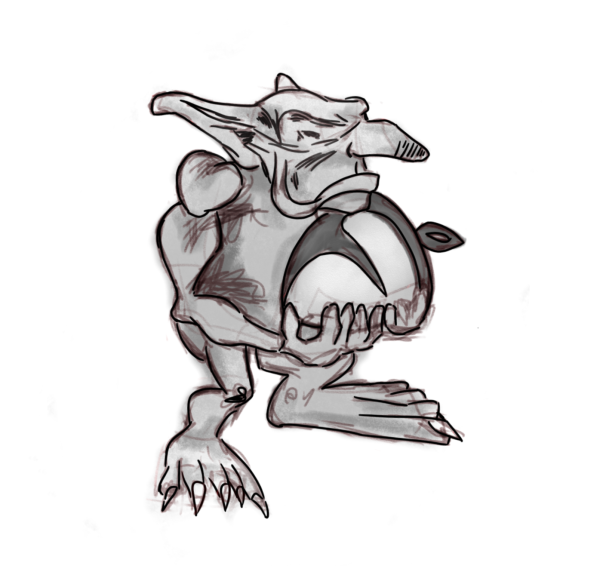A Krampus Christmas
It was December fifth in a small town in Germany. Snow was falling and the night was cold, but the town looked like a winter wonderland. A young child walked outside his house and put two little boots on the doorstep. Through the night, screams were heard from inside. When the sun rose in the peaceful sky, punishment was brought inside the house. The child was not good and instead of getting the joyous St. Nicholas, a devil appeared: Krampus. Most Americans barely know about the legend of Krampus, if anything at all. However, Krampus is not just a creature of darkness, but also a bringer of light. Krampus is actually Santa or St. Nicholas. When looking at the traditions of Santa from western countries and Krampus from Germany, it seems that these two fairy tales are quite similar, if not the same. Krampus may even be the real Santa handing out gifts.
Children are told of the tale of Santa, a jolly old man with a massive belly and beard as white as snow who brings presents to children. On Christmas Eve, which is December 24th in the United States, he got his sleigh ready. Once it becomes night, he and his nine reindeer fly through the sky, stopping by all the children’s houses and giving them presents unnoticed. Depending on whether the child is good or not, they will get either presents or coal, but it seems that Santa’s job may just be stemming from Krampus.
“If you were bad, St. Nicholas would send his friend Krampus.” Frau Tsai, the CHS German teacher said when reflecting on German traditions. “Now If you were only a little bit bad, you would get coal and potatoes in your boots instead of chocolates and sweets, but if you were even worse, a more malevolent Krampus would come in with a stick and beat you.”
While it is not the best idea to use fear as a motivation, traditions must change as the times do. As society has progressed, the traditions have evolved to hold a more saintly face of Christmas with Santa just giving gifts or coal. Santa is just an evolved version of Krampus and society has portrayed this poor bringer of punishment into a devil of terror. Movies that came out just in the last couple years such as “Krampus the Reckoning” or “A Christmas Horror Story” show Krampus as an evil creature, so horrific that he burns or poseses innocent children. These examples are just a few of the list, with another one being the widely produced meme of Krampus in the critically acclaimed game Fortnite. In the game, developers portray Krampus as an anti-Santa instead of St. Nicholas’s partner. That is the main problem with most cultural figures. People take such cultural beings like the native american head pieces, african historic wear or yet again Krampus as a thing not taken seriously when they have deep cultural meaning.
In reality, the old version of St. Nicholas said that coal bringer Krampus might actually be better in some sense. Whereas the current Santa allows basically everyone to have presents as a complete pushover in the tale, Krampus allows for punishment if you cannot be a good child. While he may not be the best idol because of the beatings he gives, he does dole out necessary punishments to those who are bad, which is very important. Just because he gives a punishment or might not have the amazing presents does not mean he should be undervalued. He is the ying to St. Nicholas’s yang, and vice versa. Seeing that both St. Nick and Krampus evolved into Santa, one must admit that Krampus does have its upsides. First and foremost Krampus is such a cool name. Additionally, Krampus has such a rich history and culture.
”It was made before writings were in Germany so it’s mostly oral tradition” said Jonah Tharpe, a German 3 student. “It’s hard to exactly pinpoint the date it originated just because the legend if you will is so old.”
When going about the holiday season, it is important to note the origins of the classic traditions, like Santa, in order to understand and celebrate them. Allowing for cultural understanding as well is important. In a society with an increasing amount of cultural appropriation, to know where traditions stem from is key. So when looking at the final picture of Germanic winter figures, perhaps there is no bringer of torture, but a judge of punishment who is the partner of St. Nicholas and who has an awesome name… Krampus.
Hello there! Our goal is to provide relavent, engaging journalism for readers of all ages. Your donation will support the student journalists of the Wolfpacket at Claremont High School, and will allow us to purchase equipment, print our monthly issues, and enter in journalism competitions. We appreciate your consideration!

Carson Hunter Paul-Lopez-Kunkel. Despite his strikingly unique name, he’s a person who embraces a carefree and down-to-earth demeanor and for most,...









